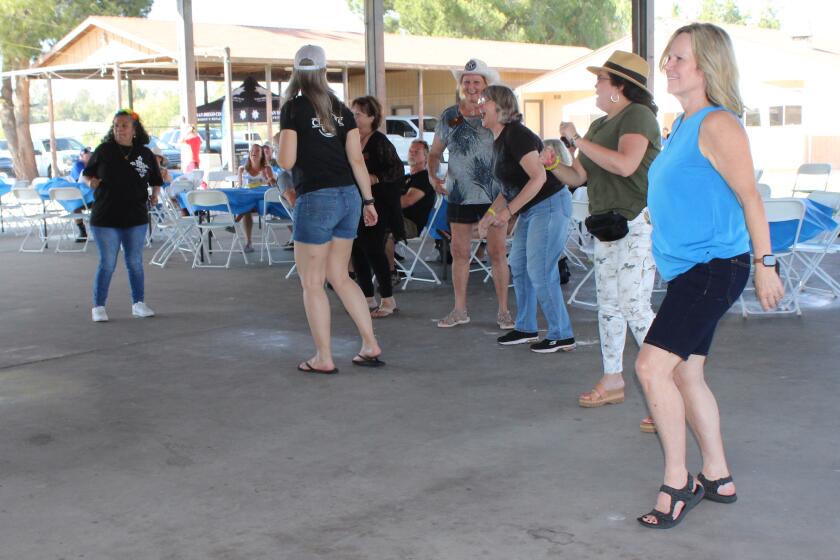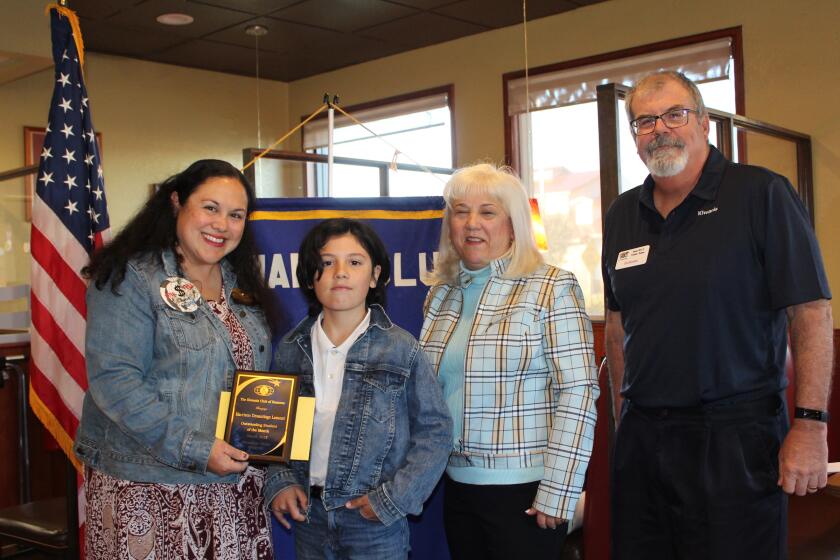Lessons from 2003, 2007 wildfires
Editor’s note: Sunday, Oct. 21, marks the fifth anniversary of the Witch wildfire, and Thursday, Oct. 25, is the ninth anniversary of the Cedar fire. This articles explores what we’ve learned and what will be different if another devastating wildfire strikes our community.
By Karen BrainardTraffic jams, no electricity, a lack of water, hundreds of homes and outbuildings destroyed or damaged—the events and scenes of the October 2007 Witch Creek fire are still fresh in residents’ minds, and many want to know if anything has changed so the past does not repeat itself.
Steps are being taken to possibly ease evacuations, assure the town has water, and educate the public on being prepared.
Ramona Fire Department/Cal Fire Battalion Chief Saul Villagomez, who is still working with residents on fire rebuilds, said one of the biggest items that has resulted from the Witch fire is more education. Community workshops have covered such topics as evacuation, defensible space, and hardening a home—making it more fire resistant.
Being ready and having a plan is key, said Villagomez.
He called Cal Fire’s “Ready, Set, Go” a good plan to have in place before, during and after a fire. That plan can be viewed at readyforwildfire.org/docs/files/File/Ready%20Set%20Go%20Plan%2009_CALFIRE_sm.pdf.
Another Cal Fire website, readyforwildfire.org/index.aspx, gives information on evacuation preparedness and other tips.
Ramona Fire Department/Cal Fire Battalion Chief Burke Kremensky pointed out that an evacuation plan for Ramona is on the sheriff’s website, sdsheriff.net/patrolstations/ramona.html.
Instead of evacuating, some in Ramona have suggested shelter-in-place areas be designated. In May 2011, a survey revealed that over 60 percent of Ramonans do not plan to leave in the next wildfire so they can protect their homes.
In a mandatory evacuation, residents have the option of leaving or staying, but they will not be allowed back until officials deem it safe.
Kremensky doesn’t advise staying or shelter-in-place.
“Fire’s dynamic. It’s ever-changing,” he said. “Shelter-in-place — we do not recommend it and we don’t support it. It’s not the safe thing to do.”
Kremensky mentioned other fires where people lost their lives by staying at their homes or a designated shelter-in-place.
If homeowners wait too long to leave and have to be rescued, he said, firefighters are pulled away from fighting the fires and are putting themselves and their engines at risk to save those lives.
Recently retired sheriff’s Lt. Julie Sutton, whose last assignment was in Ramona, said in a meeting last year that the traffic jams during the Witch fire evacuations occurred because people waited too long to leave.
“We’re encouraging people to leave, leave early, have a plan,” said Kremensky.
He pointed out that Ramona has 40,000 people, 10,000 homes and just six fire engines between the Ramona Fire Department/Cal Fire and the Cleveland National Forest station.
To alleviate the traffic jams that occurred as evacuees tried to head out west on State Route 67, the only safe way out in 2007, the Ramona Community Planning Group, the county, and the Ramona Municipal Water District have been working on establishing an emergency evacuation route. That route is designed to take evacuees through county grasslands and Ramona Municipal Water District properties north of Ramona Airport and eventually lead drivers to Archie Moore Road and Route 67 or down Highland Valley Road. The county is working on finalizing an agreement with the water district.
Kremensky acknowledged that emergency responders have learned that residents want to get back to their properties as soon as possible, but he added that safety comes first.
One of the problems in the 2007 fire that prevented people from being allowed to return was lack of water and unsafe water conditions because, with electricity out, the pumps at Ramona’ water district’s Poway Pump station could not transfer water up the hill.
To assure that water is available to Ramona, even if the electricity goes out, the water district is exploring the addition of a natural gas line to its Poway Pump Station. By adding gas-driven pumps to the station, the system would turn over to the gas pumps if electricity shuts off, said David Barnum, district general manager.
“We hope to not have a disruption of service,” he said. He added that customers may still be asked to conserve because the district would want to make sure water is available for all hydrants.
Some residents have taken water and power availability into their own hands by digging wells or buying generators.
Another problem in Ramona during the fire was evacuating pets, especially horses.
Dan DeSousa, deputy director of the county’s Department of Animal Control Services, said his staff has spoken to groups to educate people on pet evacuations.
“It is ultimately the animal owners’ responsibility to evacuate pets,” he said.
DeSousa described animal evacuations in the 2003 Cedar wildfire as chaos but said the response was better in 2007.
“It’s people learning from the past,” he said.
Since 2007, he said, all animal control officers are equipped with laptops and a GPS system to help locate areas where animals need to be rescued.
“These will save seconds,” he noted. “Seconds can make the difference between life and death in getting an animal out.”
The department emphasizes the importance of animal identification and suggests micro-chipping. DeSousa encourages horse owners to have trailers, and for all pet owners to have a disaster kit that includes water and food for each animal.
Information on a pet disaster plan and kit can be found at www.sddac.com/docs/Pet%20Disaster%20Plan.pdf.
Sites in the county, such as ranches or boarding facilities, have been identified as animal staging areas during evacuations, including several in Ramona, DeSousa said. What sites are used depend on the location of the fire and where it is moving. If Ramona is under a mandatory evacuation, DeSousa said Ramona sites will not be opened.
“Our goal is we don’t want to move horses time and time again,” said DeSousa.
Pet owners will be alerted where to take their animals on the county Office of Emergency Services website, www.sdcounty.ca.gov/oes/index.html, KOGO radio, or at the department’s emergency number, 619-236-2341.




